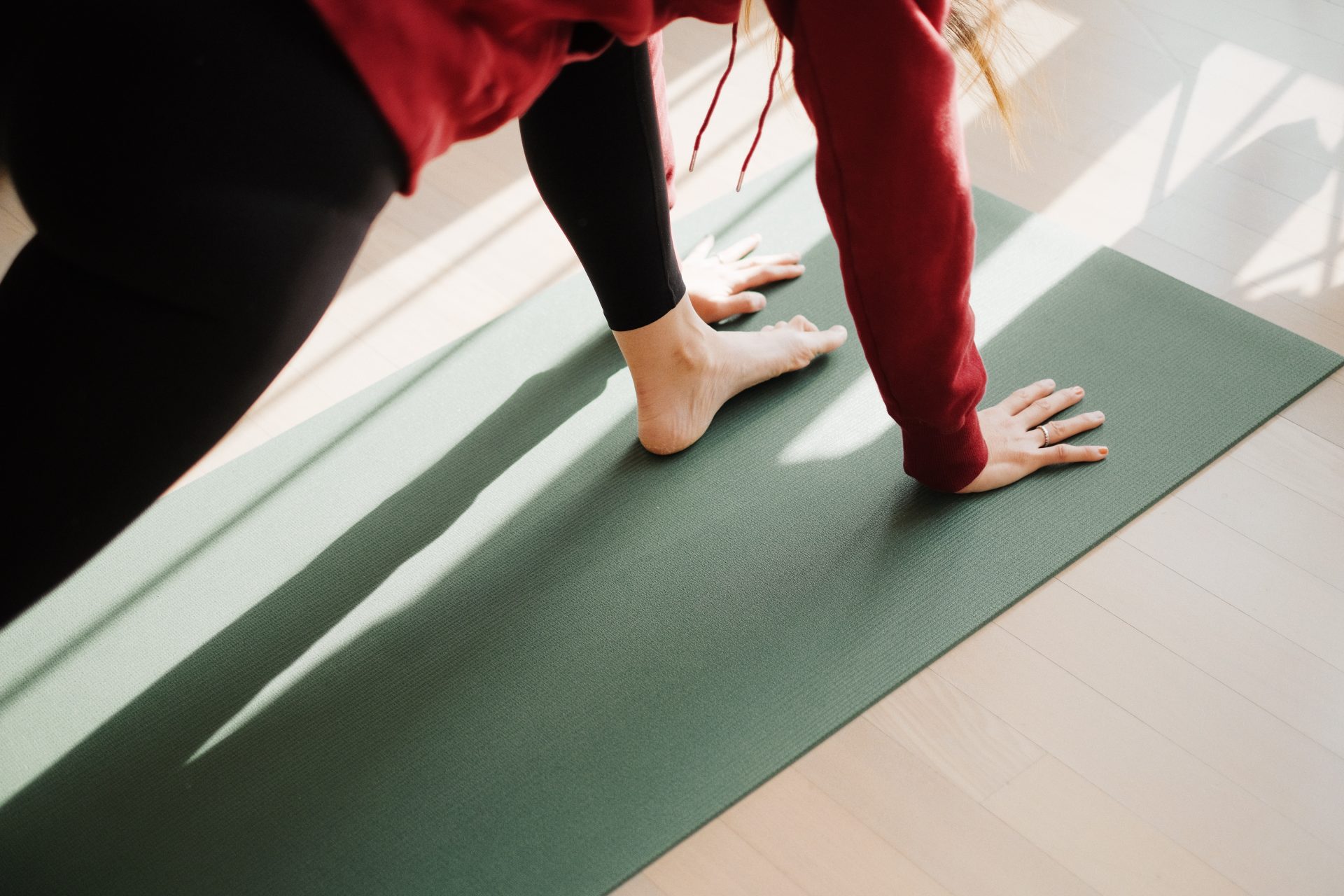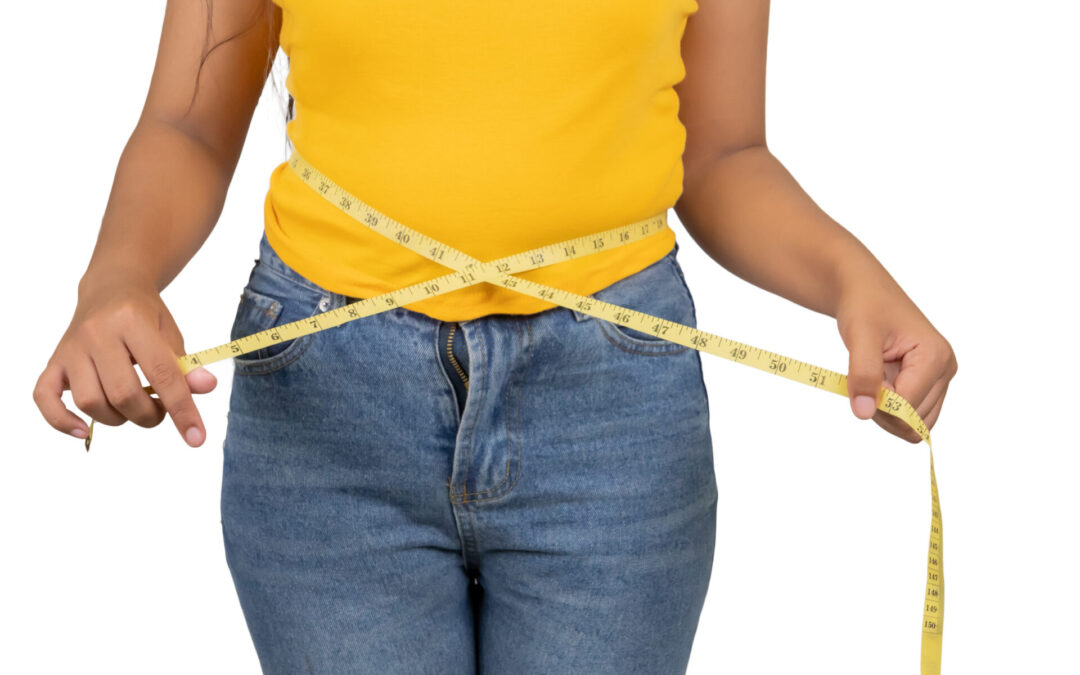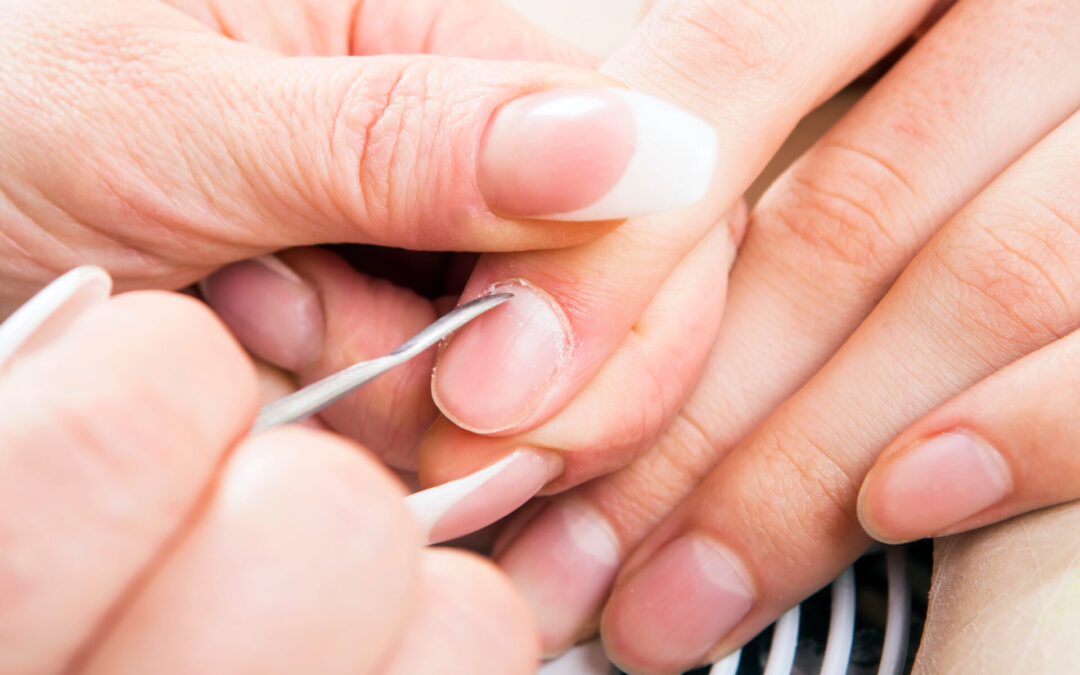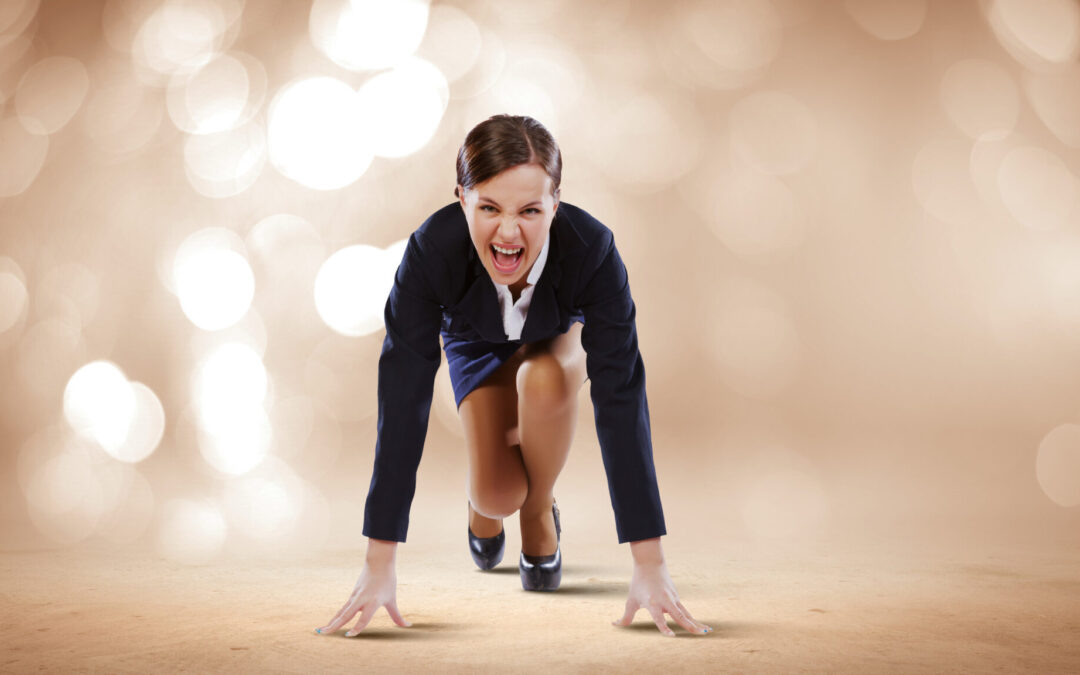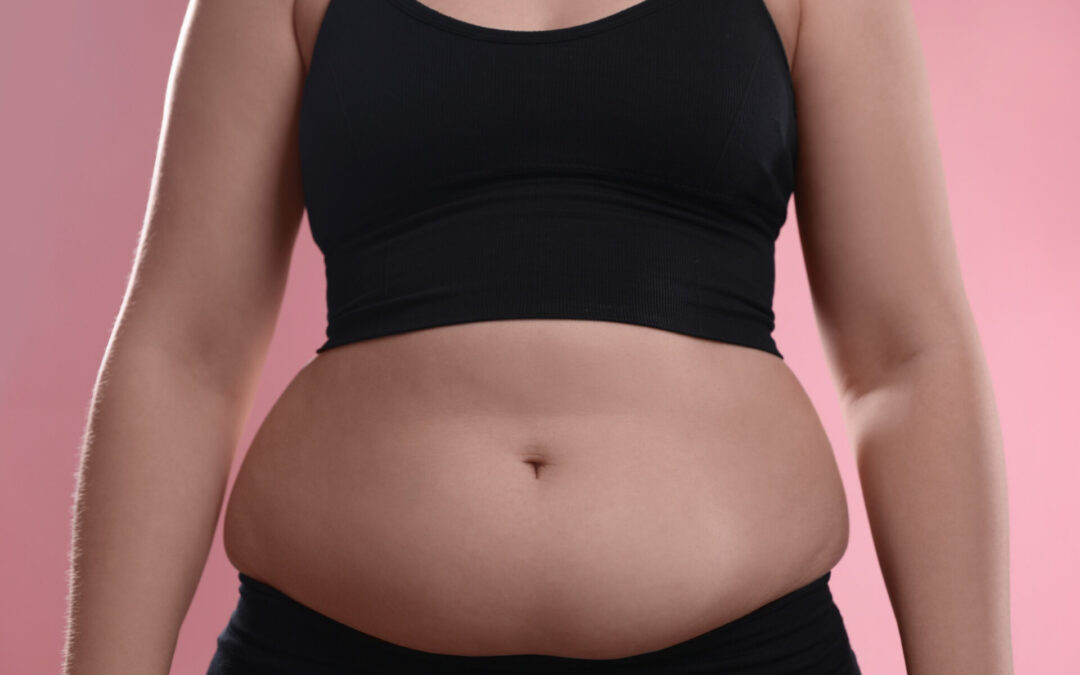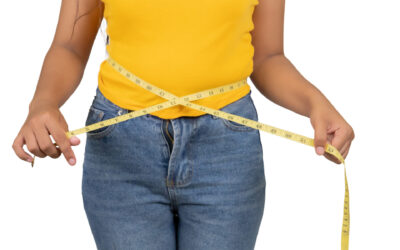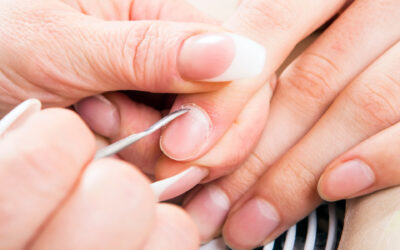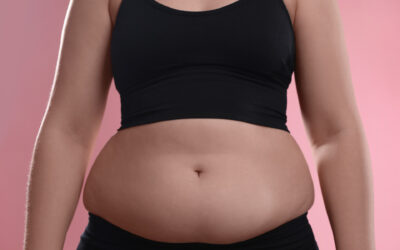If you want to make your fitness routine more interesting and unforgettable, you should try something new to feel energized and refreshed again. Here comes Pilates!
Pilates is a low-impact exercise that strengthens core muscles, improves posture, and promotes relaxation. A mat or special equipment is typically used to practice, emphasizing controlled movements and proper form. There is a common misconception that Pilates is just for women, but people of all ages, genders and fitness levels can benefit from it, as it creates a harmonious balance between the body and mind.
In this post, we will talk more about Pilates, its history, the different types of Pilates classes that you can take, and their benefits. Whether you are a Pilates newbie or a long-time Pilates lover, you will love reading this post!
What is Pilates?
Pilates is a form of exercising and body conditioning advanced through Joseph Pilates in the early 20th century, generally as a method of damage healing for dancers.
Some of the principles that define the Pilates approach include attention to each movement, use of the abdomen and lower back muscles, flowing movement patterns that should be precise, and constant and controlled respiration.
Depending on the exercise, Pilates routines can be done on especially-designed apparatuses, such as a mattress-like shaped machine referred to as a reformer or on a mat or blanket.
History of Pilates
The Pilates method takes its name from Joseph Pilates. He is a German-born immigrant to Britain and then America. He invented Pilates in the early decades of the last century as a new approach to training and body conditioning. He used special equipment called apparatus. Obviously, his best-known equipment today is Pilates reformer.
Joseph Pilates originally called his system “Contrology” and believed that it could help improve the physical and mental well-being of people of all ages and fitness levels. The first studio he opened was in New York City in the 1920s. Due to the exercises’ low-impact, highly adaptable nature, and effective methods of strengthening core muscles, he began to attract a following of dancers and athletes.
People of all ages and fitness levels practice Pilates today, which is recognized as one of the best forms of exercise, perhaps the best for your core and abdominal muscles.
Different Types of Pilates Classes
There are different types of Pilates classes available for all ages. Here is the list:
1. Mat Pilates
Mat Pilates is a type of Pilates that can be done on a mat using no equipment. It is the most traditional form of Pilates and the favorite of beginners. During the mat pilates, your movements can include planks, side planks, and core exercises to help muscles build.
Mat Pilates also focuses on improving posture and increasing flexibility.
To be successful in mat pilates, you only need your body weight and pilates mat. The mat should be thicker and denser than the traditional yoga mat.
The movements that you do during mat pilates are slow and controlled, and this makes mat pilates safe and effective for people of all ages.
2. Reformer Pilates
The Reformer machine is the most essential part of this type of Pilates. It is a special piece of equipment with a bed-like frame and a flat platform on it, called a carriage, and it rolls back and forth on wheels within the frame.
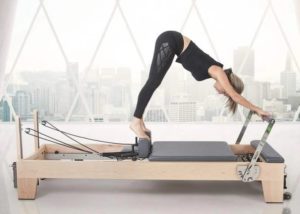
Pilates reformer exercises are more intense and dynamic compared to mat-based Pilates since it adds resistance to the movements.
This type of Pilates is ideal for muscle building, toning, and increasing stability. Reformer Pilates can help more areas than mat Pilates since it engages more peripheral muscles.
For rehab purposes, Reformer Pilates is also a great choice because it allows the client to exercise in a horizontal plane of motion and not be vertically loaded.
The horizontal plane, for example, can be used to strengthen the muscles of the leg through a larger range of motion with a lighter resistance than body weight, speeding recovery through controlled movements.
As you can see, the benefits of Pilates reformer workouts can be quite vast, so if you are up for the challenge you should definitively test it out instead of just using the mat.
3. Tower Pilates
Half trapeze is another name for the Pilates tower. To support or challenge traditional Pilates mat work, Joseph Pilates adapted a bed frame with springs into a trapeze tower. The tower (or half trapeze) is a useful adaptation for group classes. It can be used to perform almost all trapeze repertoire.
A tower class allows your body to move in a completely new way, and it is very different from anything else you have tried before. Due to the different angles of pull-on springs, the same exercises, but with your feet strapped in, can feel different and also emphasize different muscles.
4. Chair Pilates
A Pilates chair is a special piece of equipment used for specific Pilates movements. There are a few variations of the Pilates chair, but the classic one has a padded seat, sidebar, pedals, and resistance springs. It is used for balance and strength exercises that focus on developing the core.
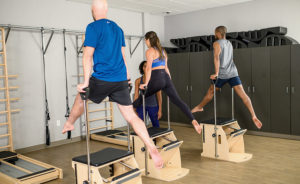
One of the most popular chair exercises is called the Tendon stretch. You need to place your feet on the pedals with your hands on the seat to do this exercise. Then bend over the chair with your head down and the body in the shape of a candy cane.
The exercises are performed while sitting or standing on the chair and can be modified to accommodate a wide range of fitness levels and abilities.
5. Barre Pilates
Barre Pilates classes combine Pilates with ballet-inspired moves (barre) and incorporate elements of dance, yoga, and strength training.
Bodyweight exercises in barre classes are typically high-repetition exercises that put the legs, abs, glutes, and arms under long-term tension. Exercises of this type improve cardio fitness. In addition, it strengthens the muscles that are responsible for maintaining posture, stability through the joints, and enduring balance.
6. Cadillac Pilates
Cadillac Pilates is a type of Pilates that is performed using a piece of equipment called a Cadillac, also known as a Trapeze Table.
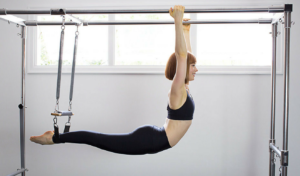
Pilates Cadillacs have four posts, a raised platform, and an overhead canopy component called a trapeze, which resembles a bed frame. Spring-loaded handles, bars, and springs elevate the user experience by adding some resistance and helping guide the movement at the same time.
Adding the Cadillac to your Pilates practice will change the movements, but not necessarily increase the difficulty.
Injuries, vertigo, and balance challenges make the Cadillac an ideal choice for students recovering from these issues. Increasing your range of motion and resistance allows you to grow in your practice and become stronger and more flexible.
7. Pilates for Athletes
Pilates for Athletes is a specialized form of Pilates explicitly designed for athletes and active individuals. This type of Pilates is based on the principles of traditional Pilates, but it is adapted to meet the unique needs of athletes which includes increased flexibility, improved core strength, and enhanced performance in all physical areas.
Practicing regular Pilates and a mindful workout routine can be beneficial for athletes. This type of mind-body exercise counterbalances athletes’ high-intensity training routines.
With Pilates, athletes can also focus on other parts of the body that others would neglect.
8. Pilates for Pregnancy
You can do Pilates exercises on a mat or with specialized equipment if you are a mommy-to-be. Various levels of resistance can be applied to equipment to support specialized postures or strengthen muscles. Pregnant moms, or people with special needs, can benefit from individualized techniques.
As part of prenatal Pilates, posture is improved, joint movement is improved, flexibility is improved, stress is relieved, muscles are strengthened, balance is improved, and joint mobility is improved.
By strengthening the obliques, abdominals, and Kegel muscles, prenatal Pilates exercises engage the entire body. To have a successful and comfortable prenatal and delivery experience, all of these factors must be taken into account. Make sure you are taking pregnancy Pilates classes with an instructor who is experienced and knowledgeable when it comes to working with pregnant women.
Health Benefits of Practicing Pilates
To simplify and organize, we have compiled a list of the health benefits you receive when practicing Pilates:
Improved Posture and Balance
When it comes to improving posture and structural alignment, Pilates is the perfect regime. Slouching, hunching over devices, stress, and structural imbalances such as scoliosis can cause poor posture.
Individuals who suffer from structural imbalances or who are stressed out can benefit from Pilates, which emphasizes core strength, flexibility, and correcting muscle imbalances.
Increased Core Strength
Pilates works your entire body, but its movements focus primarily on your core muscles, which include:
- Hip muscles
- Abdominal muscles
- Gluteal muscles
- Lower and upper back muscles
- Inner thigh muscles
Your goal should be to move your body with total control. You can control your arms, legs, and other extremities smoothly by beginning with your central core muscles and using the stability these muscles provide. It’s no easy feat, which is why Pilates helps build strength and stamina. If you have ever been sore after going skiing or snowboarding for the first time in a while, it’s because you rarely use all of those stabilizer muscles that those activities require. Taking Pilates classes helps build all of those little muscles that rarely get worked during your daily routine.
Enhanced Flexibility
Pilates will help you stretch out and strengthen your muscles, which increases flexibility. Pilates is a whole-body workout, therefore, strength and flexibility will increase in the back, core muscles, front body, side body, shoulders, hamstrings, and hips.
Pilates works your core and pelvic floor muscles in particular, and having a strong core is especially useful. The core helps hold your posture in proper alignment. In order to work your core and pelvic floor properly during Pilates exercises, it forces you to have a certain level of flexibility.
However, it’s important to note that too much flexibility and insufficient strength can lead to poor alignment, pain, and even injury. So that’s why Pilates is a fantastic balance of both.
Reduced Stress and Tension
Most of us face so many distractions, responsibilities, and commitments that it can be overwhelming, and often unproductive, which keeps us stuck in a loop of the mundane.
The Pilates practice focuses your attention on each moment and exercise, letting you avoid thinking about anything else. If you are too busy concentrating on performing the movements correctly, it makes it impossible to allow your mind to fill up with those racing stressful thoughts.
The physical benefits of Pilates include improving posture and building a strong, connected body. In turn, that can alleviate and combat feelings of anxiety by increasing self-awareness and inner strength.
Alleviated Back Pain
Many people suffer from back pain and Pilates can help alleviate and prevent it.
In some cases, back pain isn’t caused by the back at all, but by an imbalance in the hips or pelvis. Our unconscious habits can cause back pain over time, such as sinking into one hip while standing or crossing one leg over the other while seated. Also, people with children usually carry their kids on one side which can really promote imbalance. Postural imbalances can be counteracted and addressed through Pilates exercises.
Controlled movements and focus on proper alignment can also improve posture and reduce back, neck, and shoulder tension.
Pilates Good for Weight Loss
Doing Pilates for weight loss will also help you in your journey if combined with a healthy diet and other cardio exercises. Always combine Pilates with cardio and strength training to achieve a better result.
Furthermore, taking regular Pilates classes will make you stick with your fitness routine easily. In the end, you will have a better chance of maintaining a healthy lifestyle. Most people don’t specifically take Pilates for weight loss reasons, it is usually to tone up, increase flexibility, and build strength. However, it is such a hard and challenging workout, especially when doing reformer exercises, that losing weight kind of comes along with the package.
Boosted Energy Levels
Pilates improves your cardiorespiratory system by placing a strong focus on breathing. During this process feel-good hormones are released, oxygen flows, and blood circulation is stimulated. All of these can be achieved by doing Pilates, which is a low-impact exercise that rarely leaves you feeling fatigued.
Your energy level will be boosted and you will feel more energic after doing Pilates.
You could feel stressed in your normal life, and stress has the tendency to make you feel tired and down. Incorporating Pilates into your daily routine will make you feel more relaxed and energetic.
Differences Between Yoga and Pilates
The main difference between Yoga and Pilates is the focus of the practice. Yoga strongly emphasizes flexibility and meditation, while Pilates focuses more on strength, stability, and control.
Pilates movements are controlled and precise, emphasizing engaging the core and improving posture. In yoga, the movements are often more flowing and designed to stretch and open up the muscles.
Yoga also has a spiritual aspect. In most practices, meditation is necessary to develop spiritually. To form a rapport with the inner self the mind and body need to work together. In case you do not feel comfortable with the spiritual element, you can opt out. While Pilates draws elements from Yoga, it is primarily a physical exercise.
You may also like: Yoga History, Benefits & Poses You Can Practice
How to Get Started With Pilates?
Getting started with Pilates is easy and can be done by anyone regardless of their fitness level or prior experience.
Finding a qualified Pilates instructor or studio near you is necessary. Pilates exercises are precise and require proper form and alignment to be effective and avoid injury. A qualified instructor can provide guidance, feedback, and modifications to ensure you practice Pilates safely and effectively.
It is recommended to start with beginner classes or private sessions to learn the basic Pilates exercises and techniques and gradually progress to more advanced classes as you become more comfortable with the practice.
Things You Should Know Before Your First Pilates Class
You should know what to expect and what to bring before attending your first Pilates class. To ensure you have a positive and successful Pilates experience, here are some things you should keep in mind:
- Wear comfortable and stretchy clothing: Pilates involves a lot of movement and stretching, so it’s essential to wear clothing that won’t restrict your activities.
- Hydrate: Pilates is a workout, and staying hydrated is essential. Bring a water bottle.
- Mat: Some Pilates studios provide mats, but it’s always a good idea to bring your mat to ensure you have a clean and comfortable surface to work on.
- Be prepared to challenge yourself: Pilates may seem easy at first, but as you progress, you’ll find that the exercises can be pretty challenging. It’s important to push yourself, but at the same time, listen to your body and avoid pushing too hard.
- Inform the instructor if you have any injuries or medical conditions: It’s essential to inform your instructor of any injuries or medical conditions you may have, so they can modify the exercises to suit your needs.
By keeping these things in mind, you’ll be well-prepared for your first Pilates class and ready to experience the many benefits this exercise offers.
How Often Should You Do Pilates?
Depending on your fitness level and goals, Pilates sessions may be conducted more frequently or less frequently. It all depends on your lifestyle, schedule, and current workout routine. As a general rule of thumb, if you are looking to see results and progress sooner rather than later, we recommend trying to make it to the Pilates studio at least 3 times a week.
You can increase the frequency once you feel the endurance in your body building up. Make sure to follow a Pilates workout schedule that suits your lifestyle. In this case, it will be easier for you to stay consistent and enjoy your Pilates sessions without feeling over or underwhelmed.
Also, consider why you are doing Pilates, because it will also influence how often you want to take the classes. Maybe you want to lose weight and get toned up quickly for a special event? In this case, you should add Pilates to your regular workout schedule. If you are just looking for the “cherry on top” of your current routine, then once or twice a week will be sufficient.
Get Fit and Feel Great With the Right Pilates Routine for You
Ultimately, Pilates is a fantastic way to achieve a flexible, capable, and strong body. If you want to get lasting and better results, you need to commit to regular Pilates practice.
To achieve transformative results, schedule Pilates classes 3-4 times per week. Try to find a teacher you believe in so you can work together to create a plan that will realistically take you where you want to go.
All you need to do is to try it out first, and if you like it then you can try doing it on a regular basis and see where this meaningful journey takes you, and how your body changes and grows in an amazing way.
If you want to learn more about other types of workout classes and get more information about a healthy lifestyle, feel free to browse some more articles on the site! Get started today on the path to a healthier and happier you!
Zoppler is reader supported and may earn affiliate commissions from links on this page. We support and believe in all the products and services we promote and are affiliated with.

